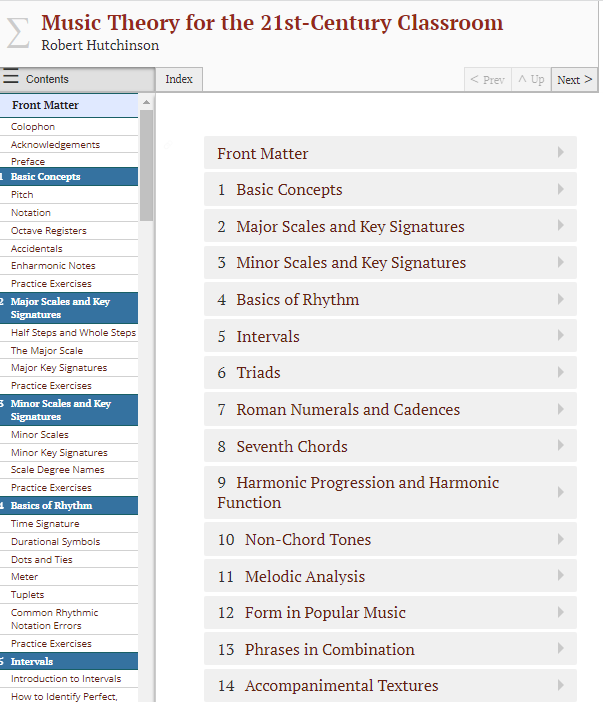
Open Music Theory Version 2 (https://viva.pressbooks.pub/openmusictheory/) and Music Theory for the 21st-Century Classroom (https://musictheory.pugetsound.edu/mt21c/MusicTheory.html) are free online music theory textbooks that focus on topics typically covered in undergraduate music theory courses. Both sites are easy to navigate and have excellent content. I refer students to both websites when teaching classical guitar and composing for classical guitar. If a topic in music theory comes up in a lesson about which a student has questions, I can explain the topic in the lesson, and then refer the student to the appropriate pages on one of the two free online textbooks for additional explanation.
I generally refer students to pages on both websites that are about music fundamentals, harmony, or form. Both websites have many more pages than I have used in lessons. I use both websites as supplemental resources, and I have not led students through either text section by section or used them as primary texts in lessons or for teaching a class. However, when I give students handouts that I make using music notation software along with my in-person explanations (or over-Zoom/over-Skype explanations), they have enough understanding to go pages to which I refer them and benefit from the supplemental reading.

Open Music Theory Version 2 (OMT) is collaboratively authored by Mark Gotham, Kyle Gullings, Chelsey Hamm, Bryn Hughes, Brian Jarvis, Megan Lavengood, and John Petersonhas. OMT has both a textbook and a workbook, and, according to the website, “is an open educational resource intended to be used as the primary text and workbook for undergraduate music courses.” Open Music Theory Version 1 is also available online (http://openmusictheory.github.io/).
Music Theory for the 21st-Century Classroom is written by Robert Hutchison at the University of Puget Sound in Tacoma, Washington. Music Theory for the 21st–Century Classroom is an “openly–licensed online four–semester college music theory textbook”. Each of the 35 chapters concludes with a short section of practice exercises.
